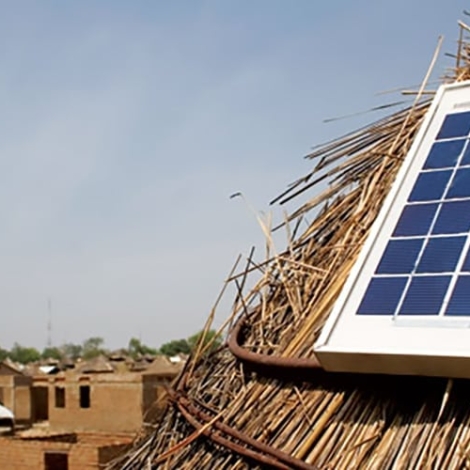Focusing on technology or infrastructure alone as a solution to water access issues has contributed to high failure rates. There is, however, a good way to use technology. Tools exist that can help evaluate a piece of equipment for sustainability within the context of the community where it will operate.
The challenge
The power of technology to solve the problems of poor people has been celebrated in recent years. In the area I’m most familiar with: water, sanitation, and hygiene, we have seen adaptations of developed-world technology, such as solar panels for pumping water, and designs for developing communities, like the arbor loo. Many of them look exciting on paper, but no matter how amazing a technology is, it must fit within the context where it will be used. For water and sanitation in developing countries, that context is often a rural community where people live on less than US$2 per day, and the residents don’t have regular, or any, access to electricity.
Now, let’s take a look at some common technology-related problems.
Inappropriate technology
Technology might not be suitable for the environment, environmental conditions, available power supply, or the users’ desired service level or uses. For example, the majority of investments in household water supplies are made without considering other water uses besides drinking. The projects don’t consider water for domestic animals, farming, or home businesses. This can lead to overuse and premature failure of the technology.
[Learn more with IRC’s report, Ladders for Assessing and Costing Water Service Delivery.]
Lack of spare parts and lack of skills and equipment to repair
Everything breaks down at some point. Reliable water services require spare parts, someone who can afford to buy them, and someone who can install them. Many rural communities are expected to manage their own water services, which makes it difficult for the private sector to develop spare parts supply chains . The problems arise because communities are far from each other and might use different technologies introduced by other organizations (there is some debate over whether standardization of components, especially handpumps, could solve this problem). Shops that serve these communities do not want to stock items that are only purchased infrequently or that have a low profit margin.
Unaffordability
Even if spare parts are available, getting to a shop that sells them might involve a long, expensive bus ride to the nearest city, which increases the cost. There might be only one mechanic in the area with the skills to repair the technology, meaning he can charge exorbitant prices. And a technology that requires energy is likely to cost more than a community can afford over time.
[For more on these problems, please see Improve International’s report, Guidelines for Resolution of Problems with Water Systems.]
A solution in frameworks
Recognizing the complex challenges to water service sustainability, several organizations have developed frameworks. A comparison of several sustainability frameworks for water services showed the most common major elements are economic/financial, environmental, institutional/governance, technical, and social. They are all inter-related. A recent systematic review found that cost is an important factor regardless of the technology. Factors like durability, rate of water flow and maintenance are critical to ensure that technologies withstand frequent use over a long period of time.
Thus, I encourage anyone considering use of innovative technology to carefully consider its applicability in context. You can use the Technology Applicability Framework (TAF), or something similar. The TAF is a tool to assess the applicability of a water, sanitation, or hygiene technology in a particular context and the potential for it to be used widely. Using the TAF, organizations can assemble users, technology producers, and regulators to jointly consider economic, technological, social, environmental, organizational, institutional, and legal issues. Conversations about reliability and safety, reparability and maintenance, environmental issues, affordability and replicability lead to a TAF profile that helps inform whether a particular technology is best for the community. The figure to the left is an example.
The TAF is specific to water, sanitation and hygiene, but the process could be adapted to other types of innovations. Evaluation of a technology that might be introduced in a new context should consider at least the following aspects:
- The users’ multiple needs
- Affordability in capital and recurrent terms
- Manageability by the network of user-group and support organizations that are expected to maintain the technology
- Physical robustness (e.g., will it be placed in extreme temperatures, near where animals graze, shipped across bumpy roads)
- Availability of spare parts and repair support in-country
- Conformity to national policies
- “Fit” to national infrastructure (including roads, energy, and communications)
- Seasonal availability of water, energy, other resources
- Sustainability in natural resource terms
[More information, tools, and case studies can be found at washtechnologies.net.]


The article and concept is so brilliant. Very much appreciate the the information provided. I will like to use in a different context. Specifically in creating a framework for adopting computerized information systems in developing countries such as Ghana. Any suggestions on ensuring it’s translated correct?
Hello Isaac and thank you so much for your kind words. I am not an expert in computerized information systems but you might learn from lessons described here http://programme.worldwaterweek.org/sites/default/files/20131219_ict_for_wash.pdf
and RWSN is a great resource for documentation and connections to others – perhaps start with their Mapping & Monitoring group http://www.rural-water-supply.net/en/mapping-monitoring